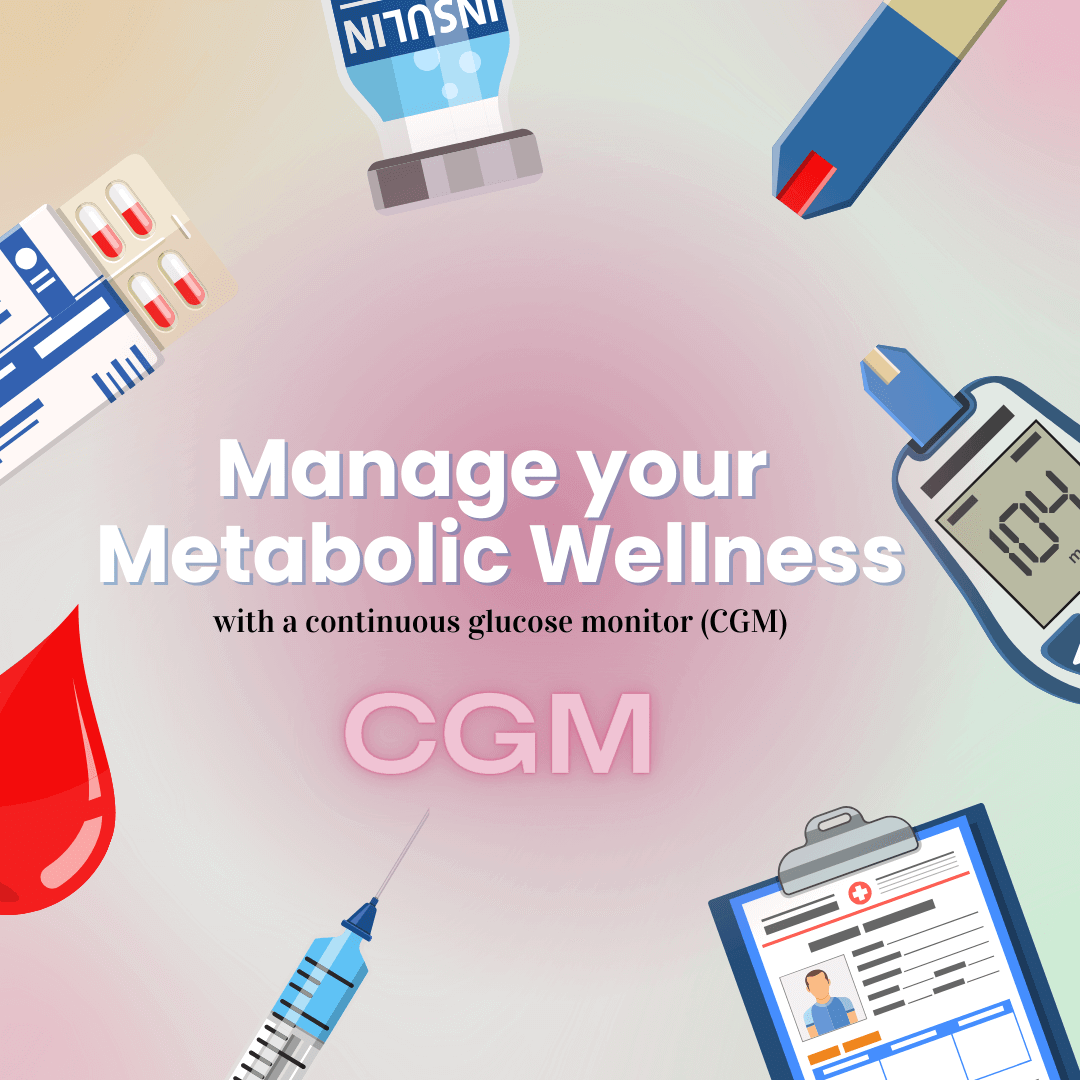Rebalance
Restoring Gut Integrity & Function
### Introducing the Rebalance Phase of the 6R Framework: Achieving Optimal Gut Health Balance
After navigating through the Remove, Replace, Re-inoculate, and Repair phases of the 6R Framework, the Rebalance phase serves as a crucial step towards sustaining long-term digestive health and overall well-being. This phase is focused on fine-tuning lifestyle choices to create a balanced, supportive environment for the gut microbiome and the body as a whole. Here, we explore strategies to modify daily habits and environmental factors that influence gut health, ensuring that the benefits gained from the earlier phases are maintained and enhanced over time.
#### Purpose of the Rebalance Phase
The Rebalance phase aims to establish a lifestyle that supports ongoing gut health and prevents future imbalances. It involves assessing and adjusting various aspects of daily life, including:
- **Dietary Habits**: Continuing to eat a balanced diet rich in fiber, probiotics, and nutrients that support gut health while minimizing intake of processed foods and other irritants.
- **Stress Management**: Implementing and enhancing stress reduction techniques as chronic stress can severely impact gut health and overall well-being.
- **Sleep Patterns**: Ensuring adequate and quality sleep, which is essential for gut health and immune function.
- **Physical Activity**: Regular physical activity can improve gut motility and reduce the risk of chronic diseases.
- **Environmental Exposure**: Reducing exposure to toxins and allergens that can affect gut health, such as pesticides, non-organic foods, and pollutants.
#### Goals of the Rebalance Phase
1. **Maintain Gut Health**: Sustain the health of the gut microbiome through ongoing dietary and lifestyle practices that promote a balanced microbial environment.
2. **Prevent Recurrence**: Avoid the reoccurrence of issues that were addressed in the earlier phases by continuing to live a gut-supportive lifestyle.
3. **Optimize Overall Well-being**: Extend the focus beyond the gut to enhance overall health, recognizing that a healthy gut contributes to a healthy body and mind.
#### Key Strategies for the Rebalance Phase
- **Mindful Eating**: Continue to practice mindful eating habits that prioritize digestive health, including chewing food thoroughly and eating in a calm, stress-free environment.
- **Routine Adjustments**: Establish and maintain a routine that includes regular meals, exercise, and sleep schedules to support circadian rhythms and digestive health.
- **Ongoing Education**: Stay informed about gut health and general health improvements to adapt and optimize dietary and lifestyle choices continually.
- **Support Networks**: Engage with communities or professionals who support healthy living and gut health to stay motivated and informed.
The Rebalance phase is about creating a sustainable and healthy lifestyle that continues to support gut health after the initial healing and repair work has been done. It's a long-term commitment to maintaining the balance of your gut microbiome through thoughtful choices in diet, stress management, physical activity, and environmental exposure. By embracing the principles of the Rebalance phase, individuals can enjoy not only improved digestive health but also enhanced overall vitality and well-being.
The Healing Diet
Nourishing your body, Restoring your Health
Digestive health is crucial, as it influences nearly every system in our body, including the immune system, metabolism, cardiovascular system, mental health, and skin health. Embarking on a healing diet is a transformative journey towards restoring gut health and enhancing overall wellness. This approach is not merely about weight management or superficial health improvements; it involves a profound understanding and commitment to nurturing the body through nutritionally rich, whole foods that promote healing and balance within the body’s systems.
The Purpose of a Healing Diet
The primary goal of a healing diet is to reduce inflammation, heal the gut lining, and rebalance the gut microbiome, which is essential for overall health. By focusing on nutrient-dense foods and eliminating those that cause inflammation and digestive distress, this diet supports the body's natural healing processes. Conditions such as irritable bowel syndrome, autoimmune diseases, food sensitivities, and chronic fatigue can see marked improvement through dietary changes.
Stress Management
Understanding the Connection to Gut Health
### Stress and Gut Health: Understanding and Managing the Connection
Stress is an unavoidable aspect of modern life, but its impact on gut health is often underestimated. The relationship between stress and the digestive system is complex and bidirectional; stress can exacerbate or trigger gastrointestinal symptoms, while gut health disturbances can, in turn, elevate stress levels. Effective stress management is therefore crucial not only for mental well-being but also for maintaining a healthy digestive system.
#### The Impact of Stress on Gut Health
1. **Disruption of Gut Microbiome**: Chronic stress can alter the composition and function of the gut microbiome, leading to an imbalance known as dysbiosis. This imbalance can reduce the population of beneficial bacteria, increasing vulnerability to digestive disorders.
2. **Increased Intestinal Permeability**: Often referred to as "leaky gut," stress can increase the permeability of the intestinal lining, allowing toxins and pathogens to enter the bloodstream, which can trigger inflammation and immune responses.
3. **Impaired Digestion and Absorption**: Stress can interfere with the secretion of digestive enzymes and stomach acid, leading to poor digestion and nutrient absorption. This can contribute to symptoms like bloating, gas, and constipation or diarrhea.
4. **Exacerbation of Gastrointestinal Diseases**: For individuals with conditions like irritable bowel syndrome (IBS), inflammatory bowel disease (IBD), or gastroesophageal reflux disease (GERD), stress can worsen symptoms and trigger flare-ups.
#### Stress Management Techniques for Gut Health
Effective stress management can significantly improve gut health and reduce the severity of symptoms related to digestive disorders. Here are several strategies to consider:
- **Regular Physical Activity**: Exercise is a proven stress reliever that can also help maintain healthy bowel movements. Activities like yoga and tai chi are particularly beneficial for both reducing stress and improving gastrointestinal function.
- **Mindfulness and Meditation**: Practices such as mindfulness meditation, deep breathing exercises, and progressive muscle relaxation can decrease stress levels and are shown to improve symptoms in gastrointestinal disorders.
- **Adequate Sleep**: Sleep is critical for both stress management and gut health. Ensuring a regular sleep schedule and adopting good sleep hygiene practices can improve overall well-being and aid in the management of stress and digestive health.
- **Balanced Diet**: Eating a diet rich in whole foods, fibers, and probiotics while avoiding processed foods and excessive caffeine and sugar can stabilize gut flora and reduce the impact of stress on the digestive system.
- **Cognitive Behavioral Therapy (CBT)**: CBT and other forms of therapy can help individuals develop coping strategies to manage stress more effectively, which can lead to improvements in gastrointestinal symptoms.
- **Social Support and Community**: Engaging with a supportive community or seeking support from friends and family can help alleviate stress. Sharing experiences and solutions can also provide new strategies for managing gut health.
The relationship between stress and gut health is a clear example of how the body and mind are intimately connected. Managing stress through a combination of lifestyle changes, dietary habits, and relaxation techniques can not only improve mental health but also significantly enhance digestive health and quality of life. By understanding and addressing the sources of stress, individuals can take proactive steps towards maintaining both a healthy mind and a healthy gut.
The Crucial Role of Sleep
and its role in Digestive Health
### The Crucial Role of Sleep in Maintaining Gut Health
In the quest for optimal health and well-being, sleep emerges as a foundational pillar that is often overlooked in our fast-paced, modern society. While we strive to optimize our diets and nurture our microbiomes, the importance of sleep cannot be overstated. It is during sleep that our bodies engage in vital processes of repair, detoxification, and regeneration. This article explores why prioritizing sleep is essential for gut health and offers practical strategies to ensure adequate rest.
#### Understanding the Link Between Sleep and Gut Health
Sleep is integral to our physiological and mental health. It acts as a reset button for the body, allowing systems to repair and rejuvenate overnight. Specifically for the gut, sleep plays several critical roles:
1. **Restoration and Repair**: During sleep, the body shifts its energy focus from the day's activities to repairing tissues, including those in the digestive tract. This repair process is crucial for maintaining a healthy gut lining and preventing issues such as leaky gut syndrome.
2. **Detoxification**: The liver, which is heavily involved in detoxifying blood and processing nutrients absorbed through the gut, performs optimally during the rest phases associated with deep sleep.
3. **Hormonal and Nervous System Reset**: Sleep regulates the hormones that control appetite and digestion, such as ghrelin and leptin. Moreover, the balance between the sympathetic and parasympathetic nervous systems—often described metaphorically as the gas and brake pedals of a car—is recalibrated during sleep. Adequate rest ensures that the "brake system" (parasympathetic nervous system) can adequately counterbalance the "gas system" (sympathetic nervous system), promoting a state conducive to digestion and nutrient absorption.
4. **Brain Health and Memory Consolidation**: Sleep aids in brain function, which is directly connected to gut health through the gut-brain axis. A well-rested brain supports better decision-making for dietary choices and more stable emotional health, which in turn affects gut function.
#### The Impact of the Gut Microbiome on Sleep
The gut microbiome also plays a crucial role in regulating sleep patterns through its influence on the body’s internal clock, or circadian rhythm. Disruptions in the microbiome can lead to sleep irregularities, which can further exacerbate gut health issues:
- **Microbial Influence on Circadian Rhythms**: The microbiome produces metabolites that can impact hormonal balance and neural signals, influencing sleep patterns.
- **Feedback Loop**: Just as sleep issues can affect gut health, an imbalanced microbiome can disrupt sleep, creating a cycle that can be challenging to break without addressing both sleep and gut health.
#### Strategies for Improving Sleep for Gut Health
1. **Routine**: Establish a consistent sleep schedule to help regulate your circadian rhythm and improve overall sleep quality.
2. **Diet**: Avoid heavy meals close to bedtime and reduce substances that can disrupt sleep, such as caffeine and alcohol. Incorporating probiotic-rich foods can also support microbiome health, which in turn supports regular sleep patterns.
3. **Relaxation Techniques**: Engage in activities that promote relaxation before bedtime, such as reading, meditating, or taking a warm bath.
4. **Sleep Environment**: Optimize your sleep environment by ensuring it is dark, quiet, and cool. Consider using blackout curtains, white noise machines, and comfortable bedding.
5. **Limit Screen Time**: Reduce exposure to blue light from screens in the hours leading up to bedtime, as it can interfere with the production of melatonin, the hormone that regulates sleep.
Sleep is a non-negotiable aspect of health that directly impacts gut function and overall well-being. By prioritizing adequate and quality sleep, we can support our digestive health, enhance our body’s natural healing processes, and improve our quality of life. Implementing strategies to improve sleep quality and addressing factors that disturb sleep can help maintain a healthy gut microbiome and optimize digestive health.
Mindful Movement for Digestive Health
Enhancing Gut Function through Gentle Exercise
### Mindful Movement for Digestive Health: Enhancing Gut Function through Gentle Exercise
Incorporating mindful movement into your routine can have a significant positive impact on digestive health. Mindful movement refers to exercises that are performed with awareness, focusing on the connection between the body and mind. These practices not only improve physical health but also reduce stress, which can greatly benefit digestive processes. Here's a closer look at how integrating mindful movement into your daily life can enhance your digestive system's function.
#### Understanding Mindful Movement
Mindful movement involves engaging in physical activity while maintaining a conscious awareness of the body's motions and sensations. This approach emphasizes the quality of movement over quantity, encouraging a deeper connection with one's physical state and promoting relaxation and well-being.
#### Benefits of Mindful Movement for Digestive Health
- **Stress Reduction**: Chronic stress can severely impact digestive health, leading to increased acid reflux, indigestion, and disruption of gut bacteria. Managing stress effectively is therefore crucial for maintaining a healthy digestive system.
- **Enhanced Blood Flow**: Gentle, regular movement helps increase blood flow to the digestive organs, which can improve the efficiency of digestive processes and aid in the quicker elimination of waste.
- **Strengthening Core Muscles**: Many mindful movement practices strengthen the core muscles, which support the digestive organs. Stronger core muscles can help enhance the functionality of these organs, promoting more effective digestion and bowel regularity.
- **Improving Gut Motility**: Exercise can help increase the contractions of the digestive tract, which are necessary for moving food through the digestive system.
#### Types of Mindful Movement for Digestive Health
- **Yoga**: Yoga combines physical poses with deep breathing and meditation, making it an ideal practice for fostering mindfulness and supporting digestive health. Specific poses, like twists and forward folds, can stimulate the digestive organs and aid in the movement of food and waste through the system.
- **Tai Chi**: This gentle martial art focuses on slow, graceful movements and is highly effective in reducing stress and improving overall body awareness.
- **Pilates**: Known for its focus on core strength, Pilates involves precise movements and breath control, which can help strengthen the muscles around the digestive organs.
- **Walking**: A simple yet powerful form of exercise, walking can be performed mindfully by paying attention to the rhythm of your steps and breathing. It is especially beneficial after meals to help aid digestion.
#### Tips for Integrating Mindful Movement
- **Consistency is Key**: Incorporate small sessions of mindful movement into your daily routine. Even a few minutes each day can make a significant difference.
- **Post-Meal Movement**: Light walking or gentle yoga after meals can be particularly effective in aiding digestion.
- **Listen to Your Body**: Choose forms of exercise that feel good to you and don’t cause discomfort. Mindful movement should be rejuvenating, not depleting
Mindful movement is a valuable tool for improving digestive health. By reducing stress, enhancing circulation, and strengthening core muscles, practices like yoga, Tai Chi, Pilates, and even mindful walking can significantly impact your digestive efficiency and overall well-being. Incorporating these exercises into your lifestyle can lead to a healthier digestive system and a more balanced state of mind.
Reducing Environmental Exposure
Better Digestive Health & Overall Wellbeing
### Reducing Environmental Exposures for Better Health
Environmental exposures to harmful chemicals and pollutants can significantly impact overall health, including the function of the immune system, endocrine system, and even the digestive system. These exposures come from a variety of sources, including air pollution, water contaminants, pesticides, heavy metals, and everyday household products. Understanding how to effectively reduce these exposures is crucial for maintaining long-term health and wellness.
#### Key Sources of Environmental Exposures
1. **Air Quality**: Pollutants such as particulate matter, volatile organic compounds (VOCs), and ozone can be found in both outdoor and indoor air. Indoor air quality can be affected by tobacco smoke, mold, and chemicals from cleaning products, paint, and furniture.
2. **Water Contaminants**: Tap water can contain various contaminants like chlorine, lead, heavy metals, and endocrine-disrupting chemicals, depending on the source and quality of water treatment.
3. **Food Contaminants**: Pesticides, herbicides, and fertilizers are commonly used in conventional agriculture and can remain as residues on fruits, vegetables, and grains. Additionally, processed foods can contain additives and preservatives that may have adverse health effects.
4. **Household Products**: Many everyday products, such as cleaning agents, cosmetics, and personal care products, can contain harmful chemicals like phthalates, parabens, and formaldehyde.
5. **Industrial and Agricultural Chemicals**: Living near industrial areas or farms can increase exposure to emissions and sprays that may affect health.
#### Strategies for Reducing Environmental Exposures
1. **Improving Indoor Air Quality**:
- Use air purifiers with HEPA filters to remove particulates and other pollutants from indoor air.
- Ensure adequate ventilation in your home to reduce the accumulation of indoor pollutants.
- Use natural cleaning and personal care products to minimize the release of harmful chemicals indoors.
2. **Consuming Clean Water**:
- Install water filters that can remove chlorine, heavy metals, and other contaminants from tap water.
- Regularly maintain and check any home water treatment systems to ensure they are effective.
3. **Choosing Organic and Non-Processed Foods**:
- Opt for organic produce to avoid pesticide residues. If budget constraints exist, prioritize organic options for foods known to have high pesticide levels.
- Reduce consumption of processed foods, which often contain additives and preservatives.
4. **Using Safer Household Products**:
- Select natural or eco-friendly household cleaning products.
- Choose cosmetics and personal care products that are free from parabens, phthalates, and other harmful chemicals.
5. **Being Mindful of Location**:
- Be aware of your local environment. If living near industrial areas, take additional precautions such as using air purifiers and sealing windows during high emissions.
6. **Education and Advocacy**:
- Stay informed about environmental issues and potential exposures in your area.
- Support and advocate for policies and regulations that aim to reduce environmental pollution and promote the use of safer chemicals in consumer products.
Minimizing exposure to environmental toxins is a crucial step towards safeguarding your health. By implementing strategies to improve air and water quality, choosing safer food and consumer products, and staying informed about environmental risks, you can significantly reduce the burden of harmful chemicals on your body and enhance your overall well-being.
Supportive Community
Better Digestive Health & Overall Wellbeing
### The Importance of a Supportive Community in Promoting Gut Health
Human health, particularly gut health, is not solely determined by diet, exercise, and medical treatments. The social environment, including the presence of a supportive community, plays a crucial role in maintaining and improving our digestive wellness. Interactions with others can influence our stress levels, eating habits, lifestyle choices, and overall well-being, all of which directly impact gut health.
#### How a Supportive Community Influences Gut Health
1. **Stress Reduction**:
Chronic stress is a significant factor that can negatively affect gut health, contributing to issues like irritable bowel syndrome (IBS) and other gastrointestinal disorders. A supportive community provides emotional support and practical help, which can mitigate stress. Sharing concerns, receiving encouragement, and feeling understood can help manage stress and reduce its impact on the gut.
2. **Healthy Lifestyle Encouragement**:
Lifestyle choices, such as diet and physical activity, are pivotal for gut health. Habits like regular exercise and a balanced diet promote a healthy microbiome and overall digestive efficiency. Being part of a community that values healthy living can motivate individuals to adopt and maintain these beneficial behaviors. Group activities, shared meals, and health-focused events can encourage healthier choices.
3. **Information and Resource Sharing**:
Access to reliable information about gut health can help individuals make informed decisions about diet, exercise, and stress management. A community often serves as a valuable resource for exchanging information and experiences related to health. Learning from others’ successes and challenges can provide new insights and strategies for managing gut health.
4. **Enhanced Mental Health**:
Mental health is deeply connected to gut health through the gut-brain axis; emotional well-being can influence digestive processes and vice versa. Social connections and friendships contribute to mental and emotional well-being. A supportive community can help prevent loneliness and depression, which are known to affect gut health negatively.
5. **Support During Illness**:
Coping with gut-related illnesses can be challenging and isolating. A supportive community can offer understanding and accommodations during difficult times, improving disease management and recovery. For example, community support groups for conditions like Crohn’s disease or ulcerative colitis provide a platform for sharing coping strategies and emotional support.
#### Fostering a Supportive Community
- **Join Existing Groups**: Look for local or online support groups focused on health, particularly those related to nutrition, exercise, or gut health.
- **Engage in Community Activities**: Participate in community events that promote healthy living, such as farmer's markets, cooking classes, or group exercise programs.
- **Volunteer**: Engaging in volunteer work can expand your social network and enhance your emotional well-being.
- **Create Your Own Support Group**: If existing groups do not meet your needs, consider starting a group focused on aspects of health that are important to you and others in your area.
A supportive community is a vital asset for maintaining and improving gut health. It offers emotional support, motivation for healthy living, a resource for valuable information, and a buffer against the mental strains that affect our digestive systems. By engaging with or building a supportive community, individuals can enhance their capacity to manage stress, make healthier choices, and maintain a robust gut, contributing to overall health and happiness.
This page contains affiliate links. This means I may earn a commission should you choose to sign up for a program or make a purchase using my link.
Functional Diagnostic Nutrition® health coaches do not diagnose, treat, prevent, or cure any
disease or condition. Nothing we share with our clients is intended to substitute for the advice,
treatment or diagnosis of a qualified licensed physician. Functional Diagnostic Nutrition® (FDN)
Practitioners may not make any medical diagnoses or claim, nor substitute for your personal
physician’s care. It is the role of a Functional Diagnostic Nutrition® Practitioner to partner with
their clients to provide ongoing support and accountability in an opt-in model of self-care and
should be done under the supervision of a licensed physician.









